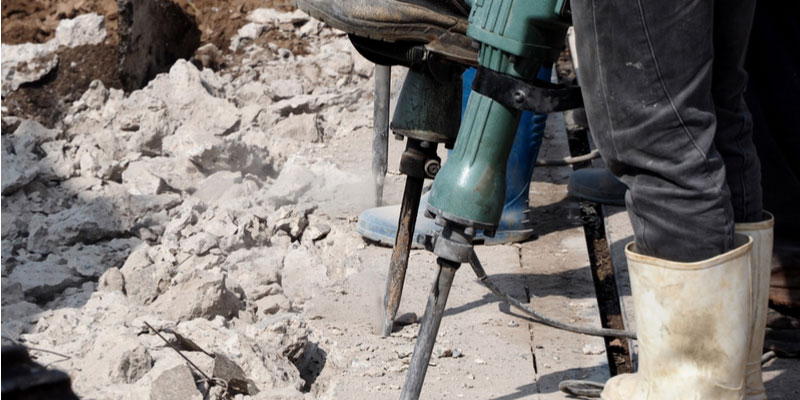Some signs that concrete demolition might be in your near future include sunken slabs, pitting, or bad cracks. When it’s time for concrete demolition in Toronto, look no further than Turnbull Masonry to get the job done right.
Concrete is prone to cracking but other than that it’s durable and longlasting. It’s not always the age of surfaces that determines longevity but how well they are taken care of and maintained. Take good care of the concrete you’ve got and it’ll thank you over the years. But… even the best cared for concrete eventually reaches the point of no return.
The following tips can help you decide if it’s time to say bye-bye to your old concrete and hello to concrete demolition.
1. Sunken Slabs in Concrete
Poor sub grade preparation, or the presence of loose wet dirt that’s settled beneath concrete can cause entire slabs of concrete to sink. Sunken slabs of concrete create a measurable lip in what should be a flat sidewalk. Overloading concrete surfaces can also result in sunken slabs. When an entire slab moves like this, it might be time for concrete demolition. Concrete rebar may need to be added during the reinstallation to prevent the same problem from happening again.
2. Concrete is Pitting or Spalling
If concrete is spalling or pitting, aka coming off in chunks, there might be several potential culprits to blame. Issues can result from poor insulation, as well as freeze/thaw cycles typical to Toronto’s winters. If spalling becomes widespread and covers a good portion of surfaces, concrete demolition may be necessary along with complete replacement.
3. Numerous Deep Cracks
Concrete is prone to cracking and for the most part cracks in concrete are nothing to freak out about. But, when cracks go ignored for a long time they have the potential to grow into massive breaks and separation of slabs may even occur. To make matters worse, cracks let moisture in and moisture causes cracks to worsen. Concrete demolition is deemed necessary when cracked concrete damage exceeds a certain level of severity.
4. Other Types of Freeze/Thaw Damages
When moisture seeps through cracks in concrete it sinks below and sits there. This moisture freezes and expands when temperatures drop, and then thaw and shrink when temperatures rise. This puts a lot of pressure on concrete from the bottom up and can result in spalling, larger cracks, and sunken slabs.
Fix cracks and other small concrete issues as fast as possible to prevent worsening of damage. Concrete damages are like a good game of Dominos, when one thing falls apart, it sparks a Domino effect on the concrete’s overall stability and longevity. The faster repairs are made, the longer it’ll be before concrete demolition is necessary.
5. Tree Roots to Blame for Uprooted Concrete
Another common reason for concrete demolition and reinstallation is unruly tree roots that tear up concrete from the bottom up. Even if you remove a tree its roots may still grow. Instead, consider adding a pattern or curvy design to concrete walkways so that they flow around trees and their root systems instead of right through them.
Turnbull Masonry offers complete concrete demolition and reinstallation. We work with you to create long lasting concrete surfaces. Contact us today for a quote!

